Search Images
Browse Content (p. 1138)
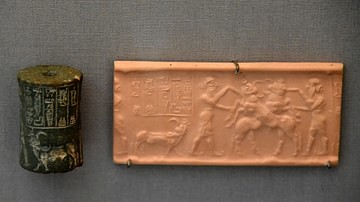
Image
Cylinder Seal Showing a Contest Scene
This green jasper cylinder seal depicts a contest scene. At the centre of the scene, there is a pair of crossed bulls; each one is being attacked by a standing bearded hero. The heroes have a double bun hairstyle. They wear a wrap-over kilt...
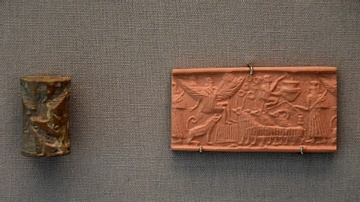
Image
Myth of Etana Cylinder Seal
This calcite cylinder seal depicts the myth of Etana, the shepherd and the legendary king of Uruk, who was carried up to heaven by an eagle to obtain an heir. Etana's ascent is watched by the shepherd and his dog, with two markhor-type goats...
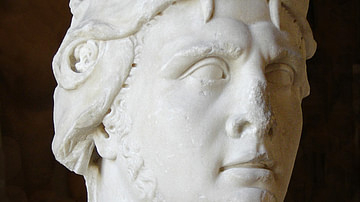
Image
Mithridates VI
Mithridates VI ruled Pontus and Armenia minor 120-63 BCE. Here, he is depicted as Heracles wearing the skin of the Nemean Lion. (Louvre Museum, Paris)

Image
Orontes II
Gold coin depicting Orontes I of the Orontid Dynasty, who ruled Armenia from 401-344 BCE. Coin dates to 362 BCE. (Bibliotheque National France)
There is some contradiction as to whether this is actually Orontes I or Orontes II.

Image
King Artavasdes II
Tetradrachm coin depicting King Artavasdes II, a member of the Artaxiad dynasty, who ruled the kingdom of Armenia from c. 56- c. 34 BCE.
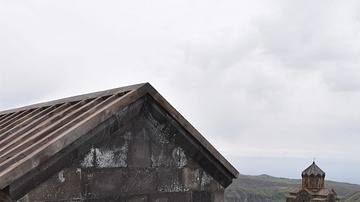
Image
Ruined Bathhouse and Vahramashen Church
Near Amberd Fortress are the ruins of bathhouses, which were popular among Armenia's elite in the Middle Ages. This bath, which is located near Vahramashen Church, was likely built in the 10th-11th centuries CE. Like other baths in medieval...
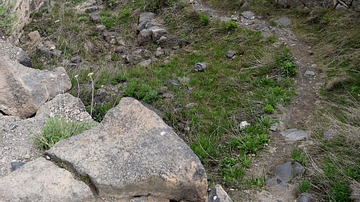
Image
Defense Walls of Amberd Fortress
Although the architecture of Amberd Fortress in what is present-day Armenia looks simple, its medieval walls were constructed from massive basalt tiles, which protected the fortress invasions and sieges. Some walls remain as thick as 4 m...
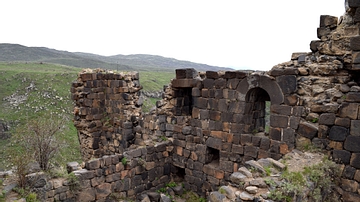
Image
Walls and Ruins of Amberd Fortress
Amberd Fortress, in the Aragatsotn province of Armenia, has a long and rich history. Its name translates as "fortress in the clouds" in Armenian, and it sits along the slopes of Mount Aragats at an altitude of 2300 m (7546 ft). Its strategic...
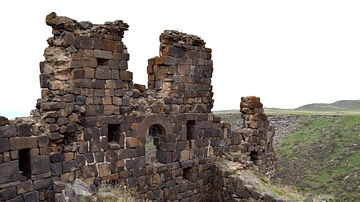
Image
Ruins of Amberd Fortress
Amberd Fortress, in the Aragatsotn province of Armenia, has a long and rich history. Its name translates as "fortress in the clouds" in Armenian, and it sits along the slopes of Mount Aragats at an altitude of 2300 m (7546 ft). Its strategic...
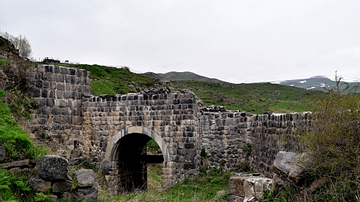
Image
Walls of Amberd and Slopes of Mt Aragats
Although the architecture of Amberd Fortress in what is present-day Armenia looks simple, its medieval walls were constructed from massive basalt tiles, which protected the fortress invasions and sieges. Some walls remain as thick as 4 m...